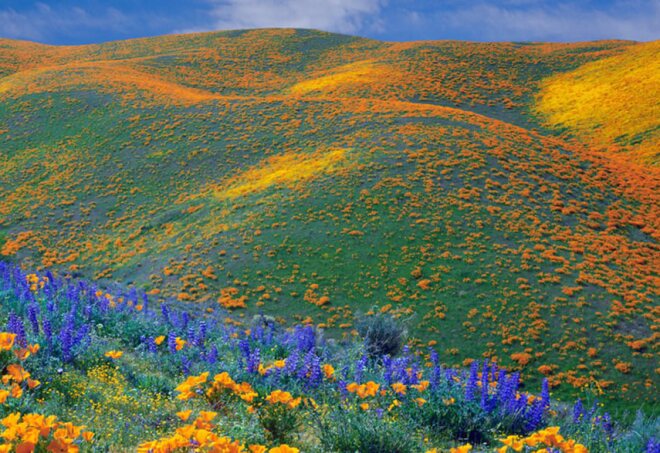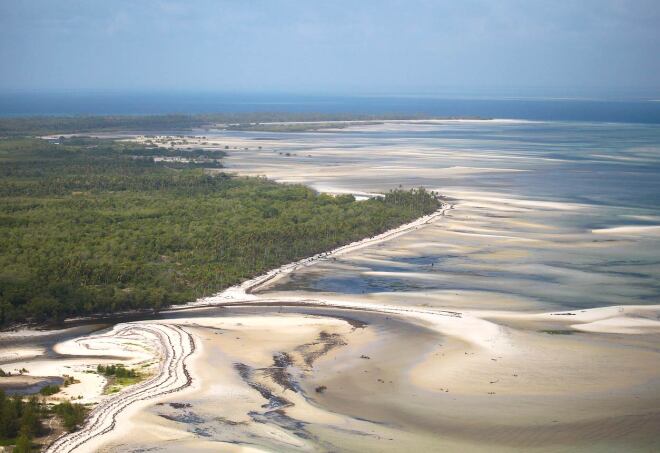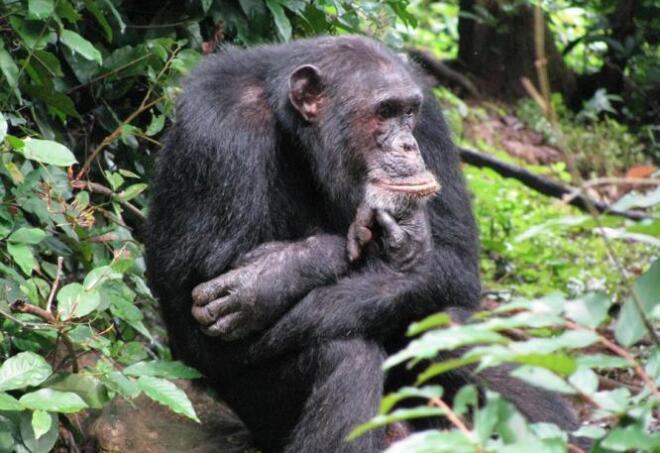One Month in Tanzania: Mountains, Bush, and Beach
Begin your journey by climbing the awesome Mount Kilimanjaro. Then stop at the Usambara Mountains—the Switzerland of Africa—on your way to the coast. Arriving at the idyllic shores of Pangani, unwind and indulge in some seriously good food at the Tides Lodge. Make your way down the coast to uncover the crumbling ruins at Kilwa Kisiwani. Return to Dar Es Salaam, then take the colonial Tazara Railway westward to explore the Selous Game Reserve and Ngozi Crater Lake.
Highlights
Mt Kilimanjaro, Tanzania
Known as “Everyman’s Everest,” the journey to the top of Mt. Kilimanjaro isn’t easy but can be done by almost anyone who prepares and commits to the challenge. This beautiful trip brings travelers through five eco-zones ranging from lush to arid to glacial. I generally guide people on 7-8 days journeys on the Machame route, which is considered the most beautiful route and away from most of the crowds. Before the climb, we take cultural tours though the foothill villages to experience local lifestyle. After the climb, World Wide Trekking offers voluntourism opportunities at our Human Outreach Project in Tanzania. At the Kilimanjaro Kids Community orphanage, many adventurers choose to bring a rich humanitarian dimension to their African experience.
Lushoto, Tanzania
The town of Lushoto is the main centre of population in Tanzania’s Usambara mountains. Nestled amongst the high eucalyptus-forested peaks at 1,400 metres above sea level, Lushoto’s climate is cool and temperate, making it perfect for hiking or biking to one of the area’s many picturesque viewpoints. It was a favourite haunt for settlers during German Colonial rule, who named it Wilhelmstal and built huge farms and plantations on the fertile slopes. After a long day’s hike, return to your Mountain Cottage and cozy up in front of the fire with a mug of Kilimanjaro coffee for the ultimate “Switzerland of Africa” experience.
Kilwa Masoko, Tanzania
Fancy testing your stamina against a 100-pound yellowfin tuna, marlin, or sailfish and bagging the catch-of-the-day? Kilwa Ruins lodge is set upon the beautiful southern coast of Tanzania, overlooking the shores of its emerald islands, coral reefs, and sandbars and within the ancient harbor town of Kilwa Masoko, once a thriving port for the lucrative gold and spice trade. Aside from offering an exhilarating fishing trip with local experts for all ranges of ability, Kilwa Ruins Lodge offers motorboat trips to the crumbling ruins of Kilwa Kisiwani and Songa Mnera, and dhow explorations along the mangrove-lined myriad waterways in search of hippos and exotic birds. Or you could just relax in your rustic “fisherman’s banda” and contemplate the sunset, gin and tonic in hand, and the view of the endless shimmering horizon.
DC Kitulo, Makete, Tanzania
Referred to by locals as Bustani ya Mungu—literally, “the Garden of God"—this national park is a botanist’s delight, bursting with the colorful orchids, lobelias, and lilies that thrive in the fertile volcanic soil. This veritable Serengeti of flowers is also a bird- or butterfly-watcher’s paradise, with many endemic species swooping and fluttering amid the open and fertile grasslands. The plateau is accessible by 4x4 from Mbeya. Follow one of the hiking trails along the impossibly beautiful rolling plains or attempt a hill climb in the shadow of the looming peaks of the Kipengere, Poroto, and Livingstone mountains. The best time to visit is during the blooming season between October and April.
Lake Ngozi is the second largest crater lake in Africa, located approximately 38 kilometers south of Mbeya in the Mporoto Ridge Forest Reserve. It is home to many species of chattering monkeys, birds, and chameleons, some of which are endemic to this area. A staggering million years old, the dazzling, emerald-green crater lake is surrounded by lush vegetation, tea plantations, and tumbling waterfalls. It is easy to see how its mystical appearance has conjured up local traditional stories, like that of a giant serpent living in the deep waters alongside the legendary Rain God. Trekking to the crater is no mean feat, as there are no accessible roads and it is a steep ascent. But the heavenly view from the top of the rim is breathtaking, as you summit and catch your first glimpse of this magical lake.
Tanzania
The Selous Game Reserve is an unspoiled wilderness, the second largest game reserve in Africa, and home to the crocodile-infested Rufiji River whose tributaries and lagoons ensure excellent game viewing even during the dry season. Named after the English explorer and conservationist Sir Frederick Selous, the reserve was designated a World Heritage site in 1982, and only a small percentage of the northern extremes of the reserve are a designated tourist destination, the largest southern part being set aside for game hunting. Many visitors choose to fly into one of the Reserve’s airstrips, as the remote and limited roads can become impassable during the wet season. Perhaps the most exhilarating activity available in Selous is a walking safari, allowed only if accompanied by an armed ranger. Nothing quite beats the adrenaline-pumping freedom of walking amid the truly wild African bush. To quote the Victorian gentleman and epic hunter Sir Frederick Selous, “But anyone who hunts big game ought to be prepared to take some chances; and after all, if the element of danger were entirely eliminated, where would the fun come in?”
Kilawani, Dar es Salaam, Tanzania
A great feat of engineering from the colonial era, the Tazara Railway leaves Dar Es Salaam and rattles its once-grand carriages through the vast uninhabited Selous Game Reserve, treating its passengers to spotting giraffe, antelope, elephants, and zebra. Crossing the Great Ruaha River, it winds its way through swamps and valleys before climbing into rugged mountains and crossing a remarkable bridge perched 164 feet above the Mpanga River Valley. This incredible journey ends in Kapiri-Moshi in Zambia, a staggering 1,860 kilometers later. The first-class carriages are comfortable, with pull-down beds and food served in the restaurant carriage. This is an experience that will fill you with nostalgia for years to come, and it’s absolutely not to be missed if you want to see some of the most remote areas of Tanzania.
Iringa, Tanzania
The largest of Tanzania’s state-administrated national parks, Ruaha is home to the Great Ruaha River, imposing baobab trees, and one of the greatest populations of elephants in any African park. It has few lodges and therefore few tourists. It is also wilder than its close neighbor, the Selous Game Reserve, and boasts a truly authentic safari experience. Night driving is not permitted, nor are walking safaris, generally, due to the large number of elephants here. But hidden away on the Jongomero River in the remote southern area of the park is the Jongomero Camp, which is both fantastically luxurious as well as truly one with its surroundings. It is possibly the best camp in the whole of Tanzania, and its guides are second to none. In addition to the breathtaking campsite itself, it offers “fly-camping” trips on which the adventurous traveler can spend the night under the stars.
Mafia Island, Pwani Region, Tanzania
The Mafia Archipelago (its name is said to come from the Arabic word morfiyeh, which means “archipelago”) consists of several islands and atolls, the largest of which is Mafia Island itself. Mafia Island is a nearly undiscovered alternative to Zanzibar, with similar picture-perfect beaches and diverse marine life, but without the crowds of tourists. Its history can be traced back to the 8th century, when boats would stop to refuel and repair along the lucrative coastal trade route. This legacy is evident in the crumbling ruins of a former town called Kua, which include a mosque and unexcavated Chinese and Persian pottery. South of the island is the submerged town of Kisimani Mafia, which was destroyed and submerged by an 1872 cyclone and has yet to be fully excavated. A protected marine preserve encompasses the islands and reefs, making this region is a diver’s paradise. Mafia Island Lodge offers makuti (similar to thatch-roofed) rooms with sea views, plus fishing, biking, walking, diving, and snorkeling, as well as historical and cultural tours.
Kigoma Region, Tanzania
Gombe Stream National Park is home to the Gombe Stream Research Center. Founded in 1967, it is a living laboratory, and a testament to the pioneering research and conservation efforts conducted by Jane Goodall on behalf of the park’s chimpanzee population. The smallest of Tanzania’s national parks, Gombe is set on the glistening shores of Lake Tangyanika and is surrounded by ancient forest and cavernous valleys. To embark on an unforgettable, several-day chimp-tracking experience, you get to the park via motorboat from Kigoma or take a local lake-taxi. A stay at Gombe Forest Lodge provides a lush, intimate haven to rest weary feet after a morning’s trek: Enjoy a dip in the crystal-clear lake, and a sundowner around the fire beneath the brilliant backdrop of stars and mystical shadowy trees.



















